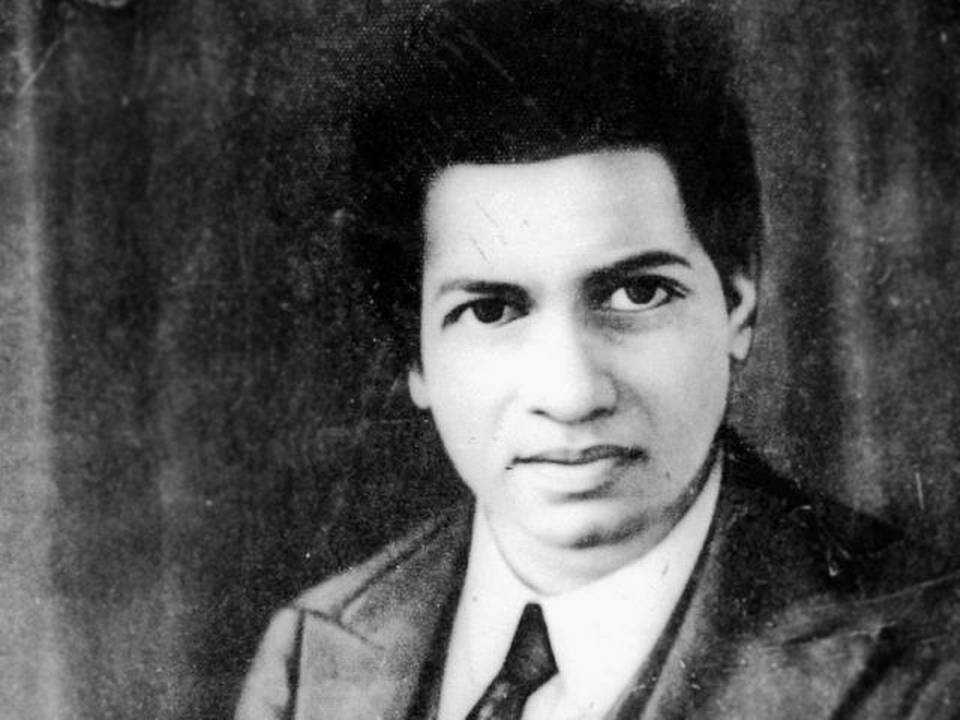The blackened coarse elbow of Ramanujan

Almost every reader would probably know about the great mathematicians Srinivasa Ramanujan (1887 – 1920). Here we would like to tell the story of an incident which we believe not many have heard of, but nonetheless it has a very inspiring morale behind it.
Ramanujan left for his heavenly abode at a very young age. His lifespan was just 32 years and 4 months. He lived only six years more after Hardy met him. It was only after meeting Trinity College, Cambridge’s Prof. G. H. Hardy that some of the most breathtaking works of Ramanujan happened. His total research output rests on 37 papers, some written in collaboration with Hardy. Several people who recognized his genius took great pains to publish Ramanujan’s notebooks, after his death. Through these notebooks and his published research papers, mathematicians to this date have been following his footsteps and new ideas, theorems and beautiful mathematics have flowed.
Sometimes we read some short but influential essays which have a tremendous amount of inspiration in our lives. Even though a research paper cannot be compared with an essay, but we can imagine there would be an analogy between the two. The works of genius are one such source of inspiration, the study of which leads to new and exciting directions of novel research.
From where do these geniuses find the strength to achieve so much? It is still a mystery, for almost all of them. To commemorate the 125th birth anniversary of Ramanujan, the Indian Academy of Sciences organized an event from 26th of December, 2011. In the first day of the event, Robert Kanigal, the biographer of Ramanujan (The Man Who Knew Infinity) was specially felicitated. It was on this day, the then prime minister of India, Dr. Manmohan Singh announced that 2012 would be celebrated as ‘National Mathematics Year’ in India. On the same day, the newspaper The Hindu published an interview of Kanigal (whose translation in available in Assamese). One of the questions of that interview was the following
Do we understand Ramanujan now or does he still remain mysterious?
To this, Kanigal replied
I think he does. I think you could say the same thing about literature, the arts. What is the genius of Picasso? People will try to explain it in an easy way but I think they are unjustified in doing it. I think some people really are a few steps beyond where the rest of us live. We are forced to view those intellects, those artistic sensibilities, as a little bit mysterious or a little beyond what is the common realm.
There is a second aspect. There are many people out there, very smart, brilliant in some [areas], and they don’t do anything with their lives. They are just stuck there. There are personal characteristics that propel people to do what they do, that is beyond the actual work that they are doing — a kind of an ambition, a kind of a drive, a kind of pushing force — “I am going to make something of myself and nothing is going to get in my way.” And I think that’s part of an understanding of how a Picasso or a Ramanujan come into the world.
Even though, every talented person, every genius has the ability to change the world, like Kanigal says this always remains a mystery for the common man. But, their stories are a source of inspiration for us. Ramanujan is an example of such a story. Much before he set sail for England, Ramanujan was considered a ‘genius’ by many of his friends and acquaintances. One evening a friend told Ramanujan so. Shocked probably at this statement from his friend, Ramanujan showed him his elbow. The friend was surprised at how black and coarse Ramanujan’s elbow appeared to be. Ramanujan replied that the elbow was black and coarse to make him a ‘genius’.
Ramanujan used to work on his mathematics, day and night, on his black slate. To erase his slate, the search for a proper cloth appeared to be a hindrance to his work. So, he just used his elbow to erase his work and make room for new. If he has so much work to do, and has so little time, then why does he not use paper? The reason was he required about four reams of paper every month. At that time, it was struggle for his family to even feed all their members, how could they afford that much paper? This was in 1912.
This incident is not only an episode to illustrate the trials and tribulations of Ramanujan’s life, but also a reminder of what it really takes to make someone a ‘genius’.
(This article is a translated and slightly modified version of an article originally published in Assamese and written by Pankaj Jyoti Mahanta. It also appears as a chapter in Mahanta’s book ‘Pratibhar Utso’.)
